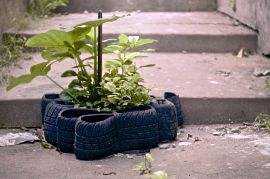In her article “The Pressure of Conservation: How the Imaginry of ‘Wild`Nature Was Formed and How to Rid Ourselves of it””, Sabine Schulz Blank makes a compelling argument on how our conception of “wild” nature derives from a misinformed understanding of the nature - culture relationship. She uses examples from the Amazon jungle where historical ecology has shown that ancient agrarian societies has in fact improved biodiversity and made the landscapes more resilient to environmental stress. Like their cultivation of the soil, creating an especially fertile type of soil termed “Amazonian Dark Earths” (ADE/ terra preta).
In a similar manner one can find examples of cultivation of water bodies that has improved their ecological conditions. In many places across Norway some of the best and riches mountain waters are a result of human cultivation. For years people have been introducing fry to mountain waters and river streams to enrich or introduce fish population. The creation of fish ladders and passes have been, and still is an important part of this cultivation.
Though there are still rivers where fish ladders are constructed of natural rocks and wood, most modern fish ladders are made of concrete and placed in areas where the water has been disrupted by human activity. So even if the disruption was man-made to begin with, these types of constructions aid and enhance the biodiversity of the water bodies where they subside. Maybe this design in nature is not “unnatural”, maybe we should look a little bit closer and ask ourselves what “wild nature” (as Schultz Blank said) really is.

 Welcome to the blog for the course KUN4500. Here the students will make their blog entries and comment on current topics in art history. Spring 2016 are all about design in nature.
Welcome to the blog for the course KUN4500. Here the students will make their blog entries and comment on current topics in art history. Spring 2016 are all about design in nature.
Log in to comment
Not UiO or Feide account?
Create a WebID account to comment